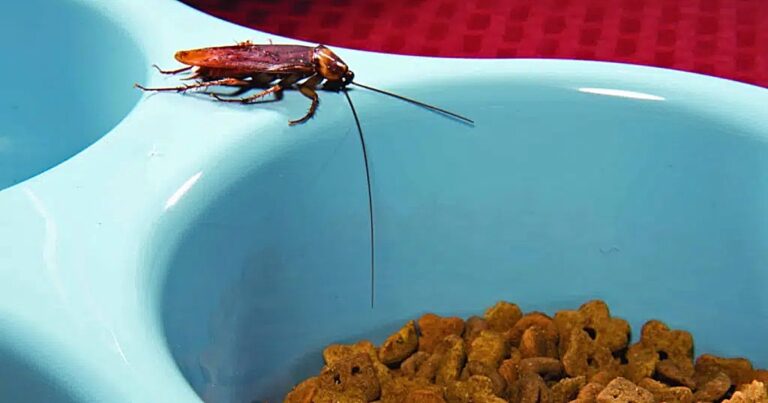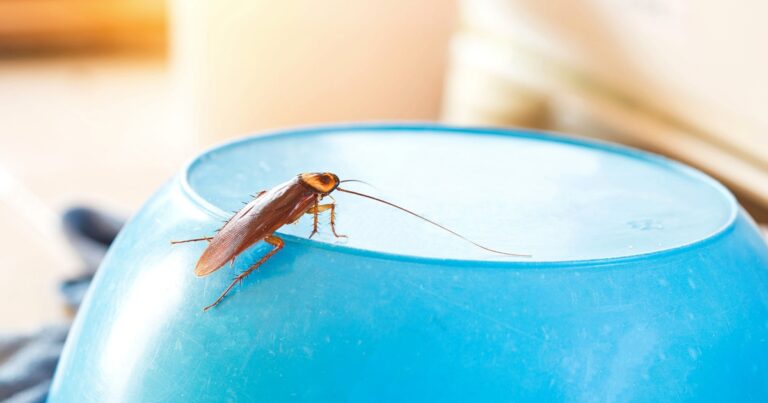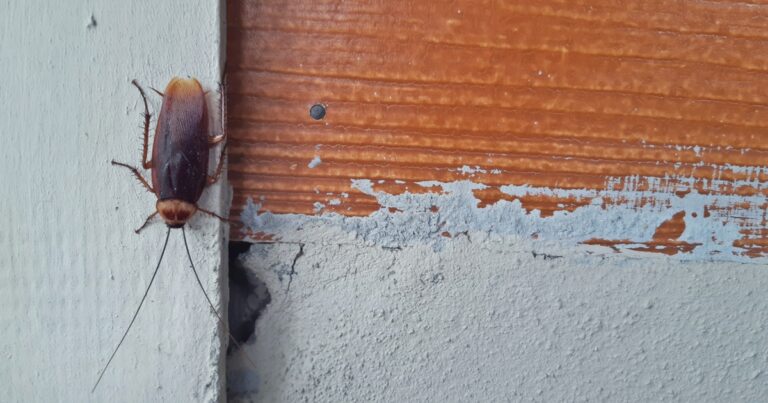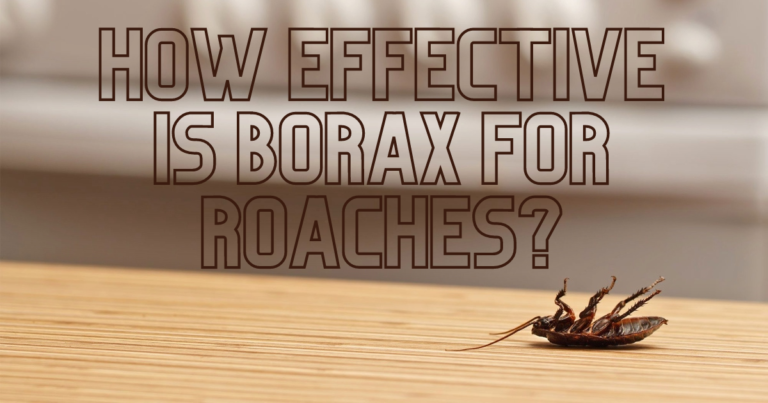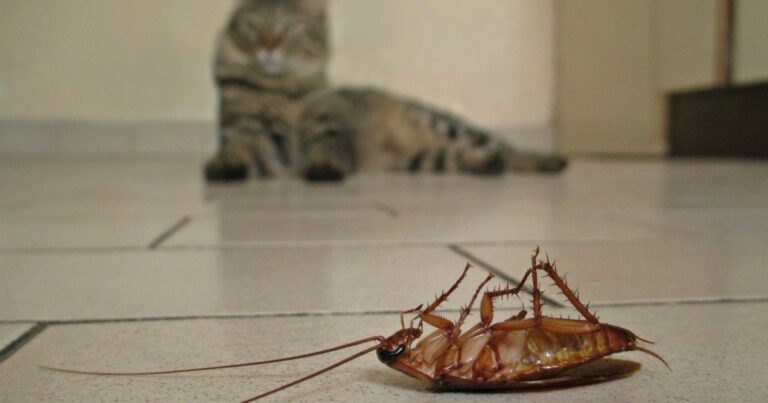Do Cockroaches Have Teeth? (Explained)
Cockroaches are known for eating everything and anything that they come across. They eat all kinds of wood, plastics, organic materials, and decay. But do cockroaches have teeth?
Cockroaches do not actually have teeth in the sense like humans or other animals. They actually have a complex mouthpart that consists of many parts.
What Are the Different Parts in a Cockroach’s Mouth?
The mouth of a cockroach has four integral parts that help them bite, chew, and swallow.
The different components that make up the mouth of cockroaches are:
- Labrum: The labrum acts as the upper lip, covering and protecting the other mouthparts. It forms a protective shield and helps guide food into the cockroach’s mouth.
- Mandibles: The mandibles, located at the front of the mouth, are the strong and biting jaws of the cockroach. These robust structures serve as the equivalent of teeth and are used to bite or chew solid food particles. Despite their small size, cockroach mandibles can deliver a surprisingly powerful bite.
- Maxillae: Positioned just below the mandibles, the maxillae are paired appendages that play a crucial role in holding and processing food. While they are not as prominent as the mandibles, the maxillae act as secondary chewing parts, working alongside other mouthparts to grind down food into smaller, more manageable pieces.
- Labium: The labium, or lower lip, assists in manipulating food and acts as a protective cover for the other mouthparts. It helps guide food towards the mandibles and maxillae for further processing and consumption.
Together, these mouthparts allow cockroaches to effectively bite, chew, and process their food. The mandibles provide the main biting action, while the maxillae contribute to grinding down food for easier digestion.
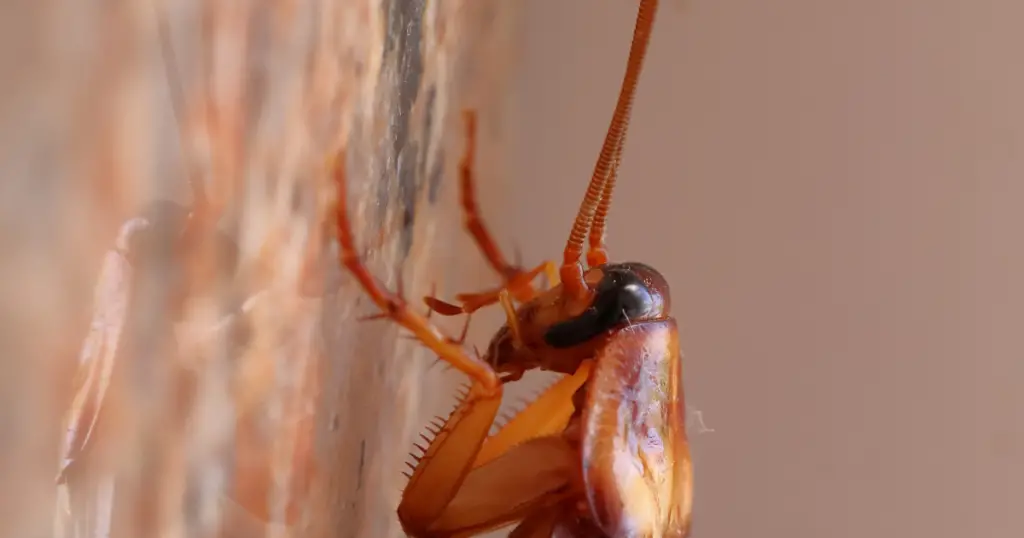
Do Cockroaches Have Teeth in Their Stomach?
Cockroaches do not have teeth in their stomach. However, they do have a unique organ called a gizzard, which plays a crucial role in their digestion process. The gizzard is part of the roach’s digestive tract that helps break down food into smaller pieces.
You might have heard the term “gizzard” before because many species, including insects and birds, have them. It contains specialized teeth-like structures that help to break down food. Rather than being located in the stomach, these “teeth” are part of the gizzard itself. As the cockroach consumes its food, it passes through the gizzard where the teeth grind and crush it into smaller fragments.
Additionally, bacteria in the cockroach’s gut also helps it to break down the food chemically.
How Do Cockroaches Eat?
Cockroaches can eat pretty much anything. After all, they are omnivores. They use their strong jaws, called mandibles, to break down solid food into smaller pieces. Cockroaches really like foods that have starch, sugar, and protein, which are often easy to find in their natural homes.
One interesting thing about how cockroaches eat is that they can regurgitate, which means they can bring up digestive enzymes onto their food. These enzymes help soften and partly digest the food, making it easier for them to eat.
When they eat, cockroaches have a special organ called a gizzard. It’s like a grinding chamber inside their bodies. The gizzard has teeth-like structures that crush and break down the food even more. This is cool because it lets cockroaches eat big chunks of food without having to chew a lot. Even on softer foods, the big pieces go straight into the gizzard. The food gets ground up by the teeth in the gizzard, helping the cockroaches digest it better.
This special way of eating helps cockroaches eat their food quickly, even if it’s in big pieces. It helps them get the nutrients they need from all kinds of foods, both solid and softer ones.
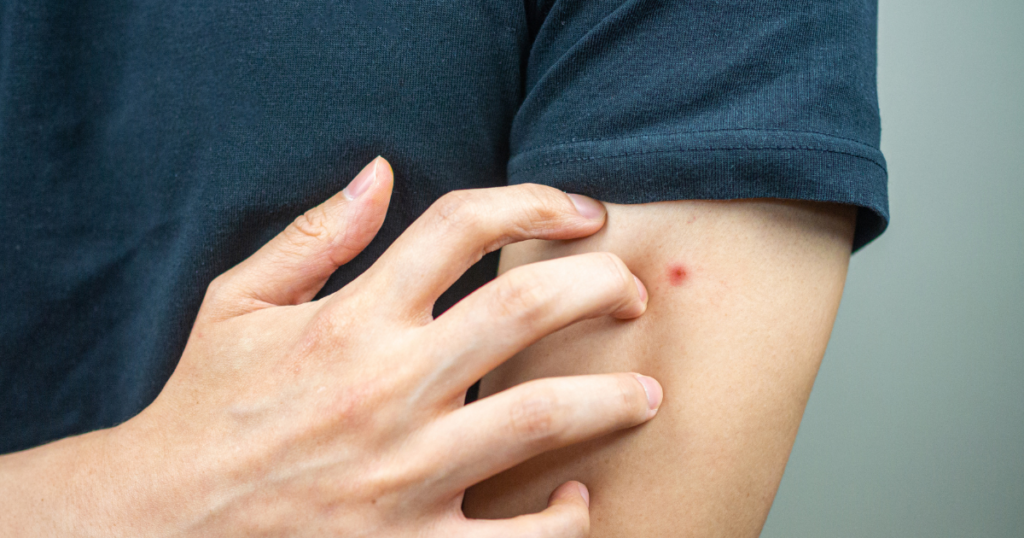
Do Cockroaches Bite?
Cockroaches are incredibly tough creatures that can adapt and survive in different places. They can be quite unsettling when they show up in our homes, and you might be concerned about whether they bite people. Well, the truth is that cockroaches do bite, but it’s not very common for them to go after humans as their main source of food.
Why Do Cockroaches Bite?
Cockroaches are clever creatures that have adapted to survive in many different environments. They usually eat decaying things like leftover food, dead bugs, and plants. However, there are times when cockroaches might bite people.
One of the main reasons why cockroaches bite is because they can’t find enough of their preferred food. When there’s not much food and water around, cockroaches get desperate and start looking for other sources of nourishment. Sometimes, they may be attracted to the moisture and organic stuff on human skin, even though they don’t really want to eat our blood.
Another reason why cockroaches might bite is to protect themselves. They’re really good at finding hiding places in dark corners and tight spots. But if someone disturbs or blocks their hiding spots, they might bite as a way to defend themselves. It’s important to know that cockroaches usually try to avoid humans instead of going after us for biting.
What Does a Cockroach Bite Look Like?
Identifying a cockroach bite can be difficult sometimes because it can resemble many other insect bites. Many people actually confuse cockroach bites for mosquito bites. Here are some ways to help you identify a cockroach bite:
- Redness: The area where you were bitten by a cockroach will typically exhibit redness. This is a common reaction to the insect’s bite.
- Swelling: In addition to redness, you may notice swelling around the bite site. The degree of swelling can vary depending on individual reactions and sensitivity.
- Itching: The presence of a cockroach bite is often accompanied by itching. This itching sensation is a common response to the bite and can range from mild to moderate.
Generally, the itching from a cockroach bite will subside within a few hours. However, if the bite area continues to swell, fails to improve after a day, or shows signs of infection (such as increased pain, warmth, or discharge), you should seek medical attention as soon as possible. Cockroaches are known carriers of harmful bacteria, and an infected bite could lead to further complications.
It’s worth noting that some individuals may have an allergy to cockroaches. If you have a cockroach allergy, the symptoms of a bite may be more severe, including excessive swelling, redness, and even the possibility of an allergic reaction. If you suspect a cockroach allergy, consult a healthcare professional for an accurate diagnosis and appropriate treatment.
Remember to maintain good hygiene practices and promptly address any cockroach infestations in your living spaces to minimize the risk of bites and potential health complications.
Where Do Cockroaches Bite?
Cockroaches are naturally attracted to warm and damp environments, which makes the areas on your body with the most sweat very appealing to them. Therefore, cockroaches may bite in places where sweat tends to gather, such as between the fingers, toes, or in skin folds. Additionally, they might target exposed parts of the body, including the hands, face, and feet, especially when left uncovered during periods of rest or sleep.
The most common places to get cockroach bites include:
- Thighs
- Calves
- Forearms
- Hands
- Feet
They also have been known to nibble on dead skin, hair, calluses, eyelashes, and fingernails.
Are Cockroach Bites Dangerous?
In general, cockroach bites pose little danger to humans. The bites themselves rarely cause significant harm or transmit diseases. Unlike certain venomous or toxic creatures, cockroaches do not possess venom or toxins in their bite.
The bite itself is typically not a cause for major concern or lasting harm. However, it’s important to be aware that cockroaches can carry harmful bacteria, parasites, and allergens on their bodies. These contaminants can be transferred to human skin through a bite or contact with cockroach saliva or feces. For anyone with allergies or asthma, this type of exposure can trigger allergic reactions or asthma attacks.
If you are bitten by a cockroach, you should take a few simple steps to care for the affected area:
- Wash the bite site with soap and water to cleanse the area.
- Keep the bite clean and exposed to air as that can help you heal faster.
- Avoid bandaging the bite or wearing tight clothing over it, as this can potentially aggravate the area.
Fortunately, the majority of cockroach bites will start to subside within a couple of hours without causing any lasting effects. The redness and discomfort should go away gradually. However, if you experience any unusual symptoms, persistent pain, or signs of infection, you should seek medical attention.
How to Prevent Cockroach Bites
Preventing cockroach bites starts with implementing effective pest control measures to keep these unwanted visitors away from your living spaces. Here are some essential tips to help you deter and discourage cockroaches:
- Maintain cleanliness: Cockroaches are attracted to food debris and unclean environments. Keep your living spaces clean by regularly sweeping, vacuuming, and mopping. Clean up spills promptly and ensure that garbage is properly disposed of in sealed containers.
- Seal entry points: Cockroaches can enter your home through small cracks and gaps in walls, floors, windows, and doors. Inspect your home for potential entry points and seal them with caulk or weatherstripping to prevent cockroach infestations.
- Eliminate food sources: Cockroaches are highly motivated by the scent of food. Store food in airtight containers and avoid leaving pet food out overnight. Clean your kitchen thoroughly, including countertops, sinks, and appliances. Don’t forget to clean under and behind furniture as well.
- Remove hiding spots: Cockroaches seek out dark and secluded areas to hide during the day. Declutter your living spaces, especially in storage areas where cockroaches may find shelter. Eliminate piles of newspapers, cardboard, and other materials that can serve as potential hiding spots.
- Seek professional help: If you have a cockroach infestation, it’s probably time to contact a pest control expert. They have the knowledge and tools to identify the root cause of the infestation and provide targeted solutions to effectively eliminate cockroaches from your home.
In addition to these preventive measures, there are specific steps you can take to deter cockroaches from accessing areas where you spend significant time, such as your bedroom:
- Before bed, wash your hands and face to remove any human scent that may attract cockroaches.
- Avoid eating in your bedroom and keep all food consumption limited to designated areas, like the kitchen or dining area.
- Keep your bedroom clean and free of clutter, as cockroaches may hide in these areas during the day and venture out in search of food at night.
Remember, cockroaches do not have teeth in the conventional sense, but they have specialized mouthparts that allow them to consume and bite food. By deterring them from accessing your food sources through proper hygiene and pest control practices, you can reduce the chances of encountering these pests and minimize the risk of cockroach bites.
Conclusion
Understanding the behavior and characteristics of cockroaches can help us better manage and prevent encounters with these resilient pests. While cockroach bites are relatively rare, it’s important to be aware of the potential health risks associated with them. Cockroaches are carriers of bacteria, parasites, and allergens, which can trigger allergic reactions or asthma attacks in sensitive individuals.
We explored the fascinating anatomy of a cockroach’s mouth, which consists of various parts with specialized functions. The mandibles act as their biting jaws, while the maxillae and labium assist in holding, grinding, and manipulating food. Contrary to popular belief, cockroaches do not have teeth in their stomach. Instead, they possess a gizzard that aids in mechanically breaking down food, along with gut bacteria that help with digestion.
To prevent cockroach bites and infestations, it’s essential to maintain cleanliness, seal entry points, eliminate food sources, and remove hiding spots in our living spaces. By reducing access to food, water, and shelter, we can deter cockroaches from our homes.
Remember, cockroaches are opportunistic feeders, attracted to a variety of food sources. By practicing good hygiene, implementing preventive measures, and addressing infestations promptly, we can minimize the presence of cockroaches and create a healthier living environment for ourselves.
Are you curious, if someone can bring cockroaches into your home, take a look at this article.


